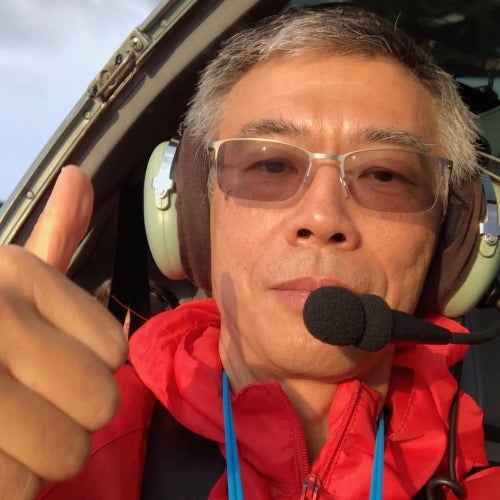- Professor of Oceanography
- Marine Geology and Geophysics
- Phone: 401.874.6848
- Email: yshen@uri.edu
- Office Location: 203 Horn Lab
- Website
- Accepting Students: Not at this time
Biography
Scientific curiosity and societal concern are two factors in Dr. Yang Shen’s career choice of studying seismic activities that can lead to destructive earthquakes.
A native of China, Shen was a young student when China was hit by an earthquake in 1976. While only 7.8 on the Richter scale, the collapse of poorly constructed buildings in China caused a huge number of fatalities and injuries and the tragic episode was the beginning of his interest in seismology.
Shen received his bachelor’s degree in geophysics at Nanjing University in 1984 and his masters at the Institute of Oceanology, Chinese Academy of Sciences three years later. He came to the U.S. in 1990 and pursued his doctorate in geophysics at Brown University.
He landed a postdoctoral position at Woods Hole and concentrated on seamounts formed at the mid-ocean ridge in the South Pacific but his interest in seismology emerged again.
Coming to GSO in 1998, Shen embarked on a collaborative project studying the Tibetan plateau. “This particular region is one of the most active of the continental collisions,” he says, referring to the meeting of the India Plate with the Eurasian Plate. Using instruments, he and his collaborators monitored earthquake activities in the Tibetan area.
Shen has been involved in seismic issues throughout the world including Iceland, Hawaii, Easter Island and the Galapagos.
An on-going project is one being done for the Unites State Geological Survey that wants researchers to gather data near Seattle in the Cascadia Subduction Zone. This study involves the structure of sediments as far down as several kilometers and one of the purposes is to help officials to formulate building code regulations. “They want to be able to understand what kind of ground shaking they can expect” in the advent of an earthquake there, says Shen.
As far as earthquake predictions are concerned, Shen says scientists are still quite far away from making accurate ones but instrumentation that keeps tabs on Earth’s movements is getting more sophisticated all the time. Even though, long-range accurate predictions are not possible right now, he notes that warnings that can be made just seconds before seismic waves from a quake hit a region could save lives.
Another project he is involved in is studying the seismic structure of the Eurasian Plate. This project is aimed at trying to determine the differences between natural seismic wave activity and wave activity caused by underground nuclear testing.
Shen likes the GSO emphasis on research and graduate teaching. He is also proud of the accomplishments made here.
“The URI Seismological Lab is one of the few groups in the world at the cutting-edge of full-wave tomography based on high performance computation. The new method is a major advance from the conventional approach based on ray theory.”
One of his latest proposals to the National Science Foundation is funding for a high performance computer for URI that would serve seismologists but also biologists, physical oceanographers and engineering students.
Such a computer “will allow us to speed up the discovery process—allow us to solve the bigger problems we can’t right now,” he says, noting that simulating a hurricane would be one lofty goal if URI can land the funding.
Shen says he feels strongly that his work and that of his collaborators become useful to society, especially in those areas where severe seismic activity can put people in harm’s way.
For relaxation, Shen loves tennis and volleyball.
Research
- Seismology
- Marine geophysics
- Computational methods
- Mid-ocean ridges
- Hotspots
- Subduction zones
- Nuclear explosion monitoring
- Volcano seismology
Education
- Ph.D. Geophysics, Brown University
- M.Sc. Geophysics, Institute of Oceanology Chinese Academy of Sciences
- B.Sc. Tectonics and Geophysics, Nanjing University
Teaching
- Geophysical Inverse Method
- Advanced Seismology
- Machine Learning in Science and Engineering
Selected Publications
Visit https://sites.google.com/view/seismo/publications for a complete list of publications.

